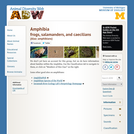
Amphibia: Information
- Subject:
- Life Science
- Zoology
- Material Type:
- Reading
- Provider:
- University of Michigan Museum of Zoology
- Provider Set:
- Animal Diversity Web
- Date Added:
- 03/07/2005

Amphibia: Information
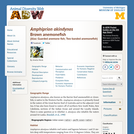
Amphiprion akindynos: Information

Amphiprion frenatus: Information
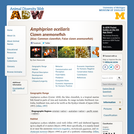
Amphiprion ocellaris: Information
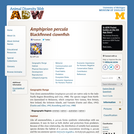
Amphiprion percula: Information
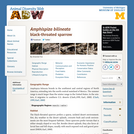
Amphispiza bilineata: Information
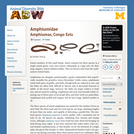
Amphiumidae: Information

This resource is a video abstract of a research paper created by Research Square on behalf of its authors. It provides a synopsis that's easy to understand, and can be used to introduce the topics it covers to students, researchers, and the general public. The video's transcript is also provided in full, with a portion provided below for preview:
"Many patients undergoing chemotherapy for cancer develop a serious side effect called chemotherapy-induced peripheral neuropathy (CIPN). CIPN involves pain, tingling, burning, or numbness in the hands and feet and is caused by neuroinflammation triggered by the protein HMGB1, but the exact mechanisms aren’t clear. To learn more and help find a treatment, researchers recently examined the plasma of human patients and mice with oxaliplatin-induced CIPN. They found that the levels of HMGB1 and its target enzyme MMP-9 (a pain marker) were elevated in CIPN plasma and that a higher dose of oxaliplatin was associated with higher HMGB1 levels and worse pain. In cell experiments, HMGB1 was degraded—and inflammatory molecule expression was suppressed—when the enzyme AMPK was activated suggesting that AMPK activation might be beneficial for CIPN. These effects were dependent on the protein SR-A1..."
The rest of the transcript, along with a link to the research itself, is available on the resource itself.

In October 2020, Amy Coney Barrett became the fifth woman confirmed to the U.S. Supreme Court.
This resource is from a collection of biographies of famous women. It is provided by the National Women's History Museum, and may include links to supplemental materials including lesson plans about the subject and related topics, links to related biographies, and "works cited" pages. The biographies are sponsored by Susan D. Whiting.
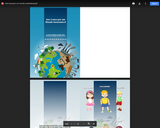
A Cartilha Eletrônica de Educação Ambiental sobre Resíduos Sólidos “ANA LAURA POR UM MUNDO SUSTENTÁVEL”de autoria de Elane Alvarenga Oliveira Hora e Rosana de Oliveira Santos Batista, trata-se de um Produto Técnico Educacional apresentado ao Programa de Pós-Graduação em Rede Nacional para o Ensino das Ciências Ambientais - PROFCIAMB, Universidade Federal de Sergipe - UFS, para atender aos requisitos do Mestrado Profissional para a obtenção do título de Mestre em Ciências Ambientais. A cartilha é um importante instrumento de referência de Educação Ambiental, pois esse material didático de divulgação será utilizado para dar apoio e também sensibilizar os gestores ambientais municipais, coordenadores e equipe das Novas Salas Verdes, assim como, de seu público alvo, ou seja, alunos da Educação Básica, a comunidade em geral e demais municípios sergipanos sobre os impactos e problemáticas socioambientais relacionadas à temática de resíduos sólidos em Sergipe, em conformidade com a Política Nacional de Resíduos Sólidos Lei 12.305/2010 (BRASIL, 2010).
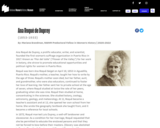
Ana Roqué de Duprey, a prolific educator, writer, and scientist, founded the first woman’s suffrage organization in Puerto Rico in 1917.
This resource is from a collection of biographies of famous women. It is provided by the National Women's History Museum, and may include links to supplemental materials including lesson plans about the subject and related topics, links to related biographies, and "works cited" pages. The biographies are sponsored by Susan D. Whiting.
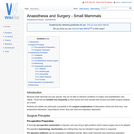
Because small mammals are prey species, they do not take to intensive conditions of surgery and hospitalisation very readily. Those that are handled very frequently by their owners are more bonded with humans and better surgical subjects as a result. Rodents and rabbits are particularly susceptible to the surgical complications of dehydration (blood and fluid loss), core temperature depression, hypovolaemic shock, ileus and renal and respiratory depression.

This lesson follows the NGSS standards for reviewing analog and digital waves. Students will be able to review the differences and similarities of analog and digital waves. Students will also be able to review how signals sent as analog or digital waves are used.

This lesson follows the NGSS standards for reviewing analog and digital waves. Students will be able to review the differences and similarities of analog and digital waves. Students will also be able to review how signals sent as analog or digital waves are used.
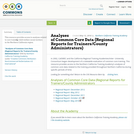
This resource provides access to analyses related to core training for child welfare social workers in the Northern California region.
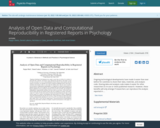
Ongoing technological developments have made it easier than ever before for scientists to share their data, materials, and analysis code. Sharing data and analysis code makes it easier for other researchers to re-use or check published research. These benefits will only emerge if researchers can reproduce the analysis reported in published articles, and if data is annotated well enough so that it is clear what all variables mean. Because most researchers have not been trained in computational reproducibility, it is important to evaluate current practices to identify practices that can be improved. We examined data and code sharing, as well as computational reproducibility of the main results, without contacting the original authors, for Registered Reports published in the psychological literature between 2014 and 2018. Of the 62 articles that met our inclusion criteria, data was available for 40 articles, and analysis scripts for 37 articles. For the 35 articles that shared both data and code and performed analyses in SPSS, R, Python, MATLAB, or JASP, we could run the scripts for 31 articles, and reproduce the main results for 20 articles. Although the articles that shared both data and code (35 out of 62, or 56%) and articles that could be computationally reproduced (20 out of 35, or 57%) was relatively high compared to other studies, there is clear room for improvement. We provide practical recommendations based on our observations, and link to examples of good research practices in the papers we reproduced.

This resource is a video abstract of a research paper created by Research Square on behalf of its authors. It provides a synopsis that's easy to understand, and can be used to introduce the topics it covers to students, researchers, and the general public. The video's transcript is also provided in full, with a portion provided below for preview:
"In the absence of oxygen, some prokaryotes can degrade organic matter via anaerobic digestion. This occurs in natural settings, like wetlands, and industrial ones, like wastewater treatment or biogas production. But what about viruses? Bacteriophages can impact their hosts’ community structure through selective pressure and have been used to influence microbial communities, such as through pathogen control. A recent study examined the virome of anaerobic digestion communities undergoing prophage- inducing environmental stresses. The virome was almost entirely composed of tailed bacteriophages of the order Caudovirales. Metagenome reconstruction revealed 1,092 viral genomes and 120 prokaryotic genomes, and over half of the prokaryotic genomes contained a provirus in their genomic sequence. In general, species of viruses and prokaryotes could be grouped by having similar reactions to stressors. Archaea had the most pronounced reactions to stressors and featured behaviors unique to those species..."
The rest of the transcript, along with a link to the research itself, is available on the resource itself.
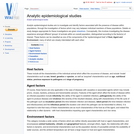
Analytic epidemiological studies aim to investigate and identify factors associated with the presence of disease within populations, through the investigation of factors which may vary between individual members of these populations. Details on study designs appropriate for these investigations are given elsewhere. Conceptually, this involves investigating the disease experience amongst different 'groups' of animals within an overall population, distinguished according to the factor(s) of interest. These factors can be classified as one of the components of the 'epidemiological triad' of Host, Agent and Environment, many of which are closely interrelated with each other.

This lesson focuses on the vocabulary and skills students need to define, identify, discuss and apply a variety of informative writing techniques. The texts in this lesson are infographics related to marginalized people. Students are asked to apply the techniques they learn to an informative text of their own.
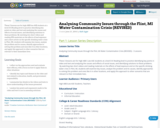
These 3 lessons are for high ABE/low ASE students at a level D-E Reading level to practice identifying key points in video and text and analyzing the causes and effects of social issues, and identifying solutions to these problems. By watching two short videos and reading EPA materials on the effects of lead exposure and a short article on the specific drinking water crisis in Flint, MI, students will examine key issues, analyze the problem and its causes, identify approaches to solving this problem and ones like it in other locations, and apply this approach to other scenarios that are relevant to their immediate lives.